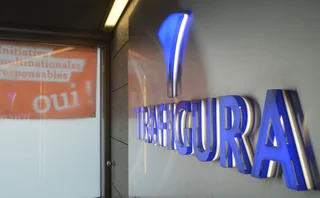
Insurers still grappling with ERM implementation
Op risk remains a weak point at insurance firms
STAMFORD, CT – Insurers around the globe are finding it challenging to fully implement the risk and capital management processes that would enable them to realise the full potential of enterprise risk management (ERM), says Towers Perrin’s 2008 insurance industry ERM survey.
While insurance companies have made progress in integrating ERM into their business processes, more than half (55%) stated substantial work is needed before they can use economic capital to guide risk-based decision-making, and 60% noted considerable strides must be made before they can link economic capital metrics to performance management. More than 40% remain focused on getting the basics right in their economic capital calculations.
The survey, conducted during May and June of 2008 – before the global financial crisis – also found operational risk management capability remains weak. Only 7% of participants stated they have adequate operational risk management capability in place, and 37% said significant work is required, which is in stark contrast to views expressed on insurance, credit and market risks (with 9%, 11% and 16%, respectively, requiring significant work). Operational risk also lags other types of risk in terms of setting risk limits and economic capital calculation methodology.
Operational risk management ranks only seventh among near-term ERM priorities. And when calculating economic capital for operational risk, simplistic factor-based methods are the most commonly used approaches (43%), with only 17% using stress testing and 16% using stochastic methods. Among European insurers, the proportion expected to use an internal model for operational risk (51%) is substantially behind insurance, market and credit risk (86%, 80% and 65%, respectively).
Despite the acknowledged need for improvement, ERM is influencing many important strategic decisions, reports the survey. More than 30% of survey respondents have made changes to their company’s risk strategy or appetite (36%), asset strategies (35%) and product pricing (31%) since the previous survey, conducted in 2006.
“The current crisis in the financial markets, the fragile state of the global economy and a North American hurricane season that has resulted in significant insured losses underscore the importance of having clearly defined risk strategies and tolerances in place,” says Tricia Guinn, managing director of Towers Perrin’s risk and financial services segment. “Taking a holistic approach to risk management, one that connects a company’s risk tolerance to the decisions it makes and the capital it holds, while fostering a culture of prudent risk management and risk-taking at every level of an organisation, has never been more crucial.”
However, insurers appear reluctant to link compensation to risk-taking. Only 30% of respondents indicate they incorporate risk measures of any kind into incentive compensation arrangements, and only 10% use economic capital for this purpose. Some 66% of insurers globally have no future plans to use economic capital in incentive compensation.
European insurers are ahead of their North American counterparts in the implementation of economic capital and its use in decision-making. These capabilities, especially under Solvency II, are expected to lead both to lower capital requirements and a competitive advantage. European insurers are giving greater short-term priority to the use of economic capital within their decision-making processes (56%), compared with their counterparts in North America (40%) and in the Asia-Pacific region (38%), says the survey.
European insurers have also stated that, within the next two years, they expect to use economic capital in most major decision-making processes (80% to 90%), compared with North American firms (60% to 75%) and companies in the Asia-Pacific (50% to 65%).
Over half (52%) of European firms have documented their risk appetite, compared with only 40% of insurers in North America. Survey findings indicate that those same companies in Europe are also more apt to set risk limits for day-to-day management issues such as market risk (88%) than their counterparts in North America (61%).
“European insurers are implementing more sophisticated risk analyses that place them in a stronger position to demonstrate lower capital requirements,” says Steve Taylor-Gooby, managing director of Towers Perrin’s insurance consulting business. “Regulatory drivers are also raising awareness regarding risk mitigation, for example, hedging and reinsurance programmes.”
Only users who have a paid subscription or are part of a corporate subscription are able to print or copy content.
To access these options, along with all other subscription benefits, please contact info@risk.net or view our subscription options here: http://subscriptions.risk.net/subscribe
You are currently unable to print this content. Please contact info@risk.net to find out more.
You are currently unable to copy this content. Please contact info@risk.net to find out more.
Copyright Infopro Digital Limited. All rights reserved.
As outlined in our terms and conditions, https://www.infopro-digital.com/terms-and-conditions/subscriptions/ (point 2.4), printing is limited to a single copy.
If you would like to purchase additional rights please email info@risk.net
Copyright Infopro Digital Limited. All rights reserved.
You may share this content using our article tools. As outlined in our terms and conditions, https://www.infopro-digital.com/terms-and-conditions/subscriptions/ (clause 2.4), an Authorised User may only make one copy of the materials for their own personal use. You must also comply with the restrictions in clause 2.5.
If you would like to purchase additional rights please email info@risk.net
More on Risk management
BofA sets its sights on US synthetic risk transfer market
New trading initiative has already notched at least three transactions
Op risk data: At Trafigura, a $1 billion miss in Mongolia
Also: Insurance cartels, Santander settlement and TSB’s “woeful” customer treatment. Data by ORX News
Cyber risk can be modelled like credit risk, says Richmond Fed
US supervisors may begin to use historical datasets to assess risk at banks and system-wide
The changing shape of risk
S&P Global Market Intelligence’s head of credit and risk solutions reveals how firms are adjusting their strategies and capabilities to embrace a more holistic view of risk
To liquidity and beyond: new funding strategies for UK pensions and insurance
Prompted by policy shifts and macro events, pension funds and insurance firms are seeking alternative solutions around funding and liquidity
More cleared repo sponsors join Eurex ahead of cross-margining
End of TLTROs for banks and pension fund search for liquidity management tools drives uptake
Reimagining model risk management: new tools and approaches for a new era
A collaborative report by Chartis and Evalueserve on how the use of automation can combat the growing complexity of managing model risk due to regulation and market volatility
What Goldman’s appeal victory means for Fed stress tests
Decision could embolden more banks to appeal, analysts say. But others believe result is one-off







